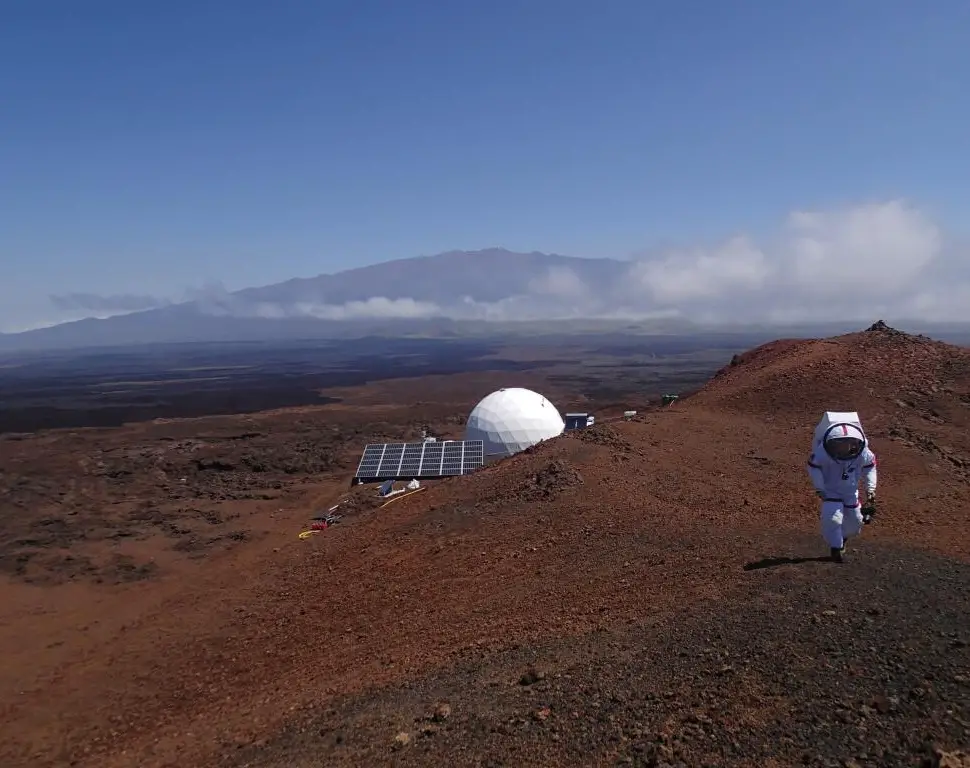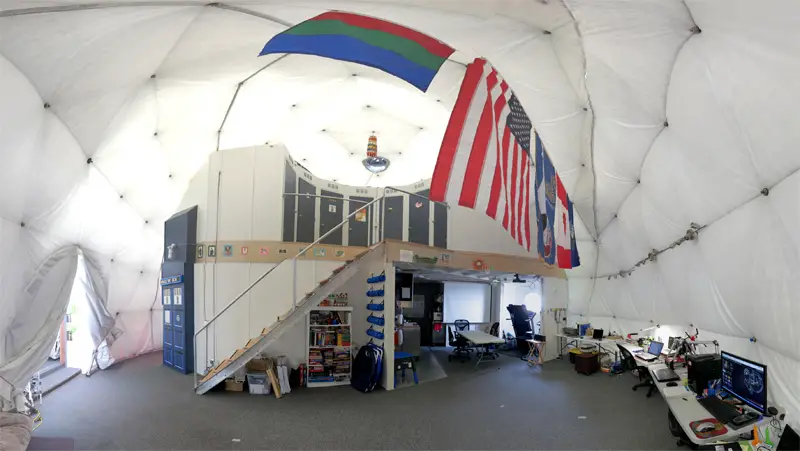
30th August 2015 Mars colony simulation begins A year-long experiment to simulate a Mars colony has begun in a remote part of Hawaii.
Hawaii Space Exploration Analog and Simulation (HI-SEAS) is a collaboration between the University of Hawaii and NASA. The experiment, which began on Friday 28th August, is located in an isolated position on the slopes of the Mauna Loa volcano on the island of Hawaii. This area has Mars-like features and an elevation of 2,500m (8,200ft) above sea level. Six people will spend 365 days inside a small dome, only 36ft (11m) in diameter and 20ft (6m) tall, eating a diet that consists of traditional space food (such as freeze-dried items). They will only be allowed to venture outside if they wear a spacesuit and will be monitored using cameras, body movement trackers, electronic surveys and other methods. The team comprises three men and three women – a French astrobiologist, German physicist and four Americans including an architect, journalist, pilot and soil scientist. HI-SEAS is funded by the NASA Human Research Program. Its purpose is to determine what is required to keep a space crew happy and healthy during an extended mission to Mars and while living on the surface of Mars. Research into food, crew dynamics, behaviours, roles, performance and other aspects of space flight and a mission on Mars itself are the primary focus. The HI-SEAS team will also conduct a variety of other science research as part of their daily activities.
NASA has a long-term goal of sending humans to Mars, with the 2030s being the most likely timeframe in which this happens. Billionaire entrepreneur Elon Musk also wants to establish permanent settlements on the Red Planet. There have been three previous HI-SEAS experiments. This fourth test will be the longest so far (the last one ended after eight months) and will offer an interesting glimpse into the possible future of human space exploration. "The longer each mission becomes, the better we can understand the risks of space travel," says Kim Binsted, principal investigator and University of Hawaii professor from the Department of Information and Computer Sciences. "We hope that this mission will build on our current understanding of the social and psychological factors involved in long duration space exploration and give NASA solid data on how best to select and support a flight crew that will work cohesively as a team while in space." Below is a recent interview with Sheyna Gifford, who will serve as the Health Science Officer and Habitat Journalist. For more information, visit the official website at hi-seas.org. You can also follow their progress at LiveFromMars.life and on Twitter @ HI_SEAS.
Comments »
|








